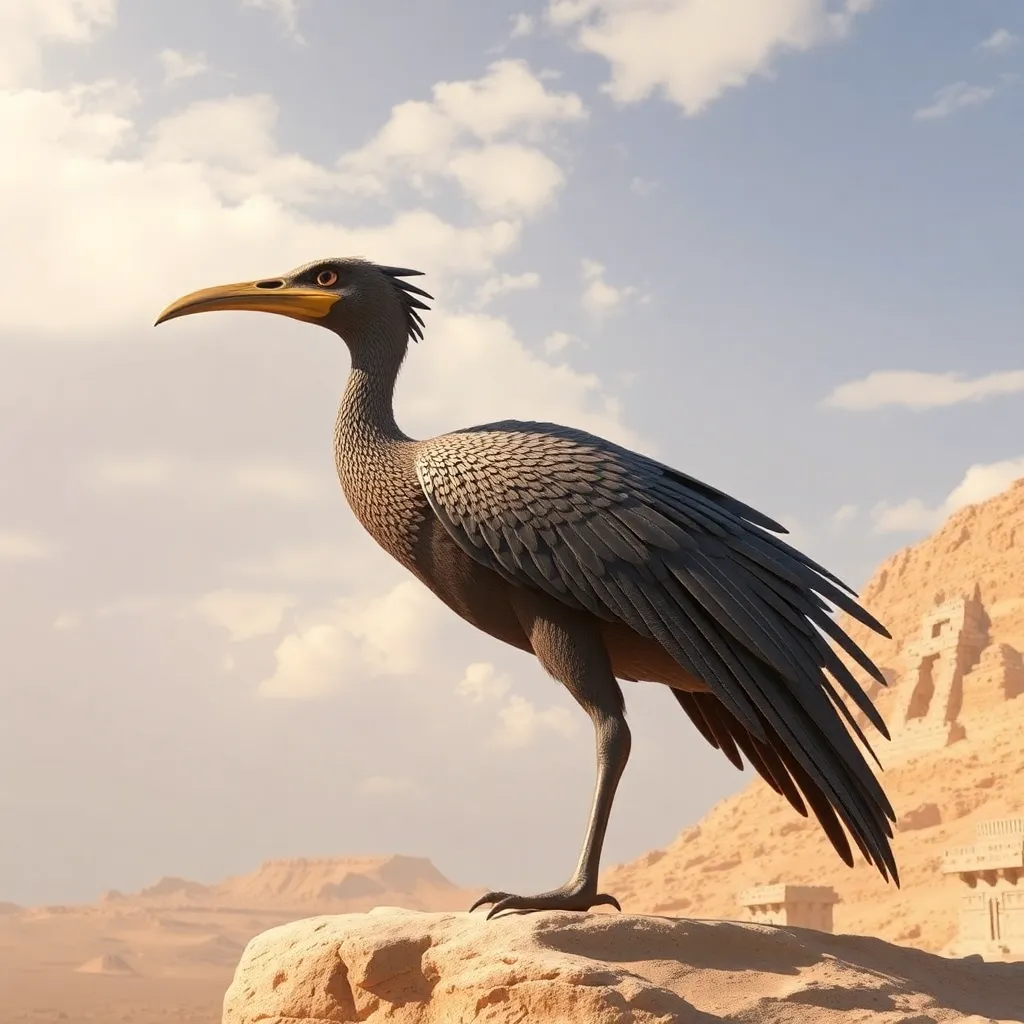The Bennu Bird: An Exploration of Its Mythical Origins
I. Introduction
The Bennu Bird, a symbol of rebirth and renewal in ancient Egyptian mythology, stands as a fascinating figure within the rich tapestry of Egyptian lore. Often depicted as a heron or a bird resembling a phoenix, the Bennu Bird is not only a creature of myth but also a representation of the cyclical nature of life and death.
In ancient cultures, the Bennu played a crucial role, embodying the connections between the physical and spiritual worlds. This article will delve into the historical context, symbolism, and artistic representations of the Bennu Bird, as well as its legacy in modern culture, highlighting its enduring significance throughout the ages.
II. The Historical Context of the Bennu Bird
To understand the Bennu Bird’s importance, one must first explore the historical context of ancient Egyptian civilization. The Egyptians held a deep belief in the afterlife and the cyclical nature of existence, which profoundly influenced their mythology and religious practices.
- Ancient Egyptian civilization and its beliefs: The Egyptians believed in numerous deities and the concept of Ma’at, which represented truth, balance, and order. The Bennu Bird, embodying resurrection, fit seamlessly into this worldview.
- The role of mythology in Egyptian culture: Myths were integral to the Egyptians, serving to explain natural phenomena, life cycles, and the divine order of the universe.
- Historical texts and artifacts featuring the Bennu: Texts like the Pyramid Texts and various tomb inscriptions reference the Bennu, often linking it to the sun god Ra.
III. The Symbolism of the Bennu Bird
The Bennu Bird is rich in symbolism, encapsulating themes of resurrection and transformation. Its imagery is associated with various aspects of life and the divine.
- The Bennu as a symbol of resurrection and rebirth: The bird’s emergence from fire and ash parallels the cycle of death and rebirth, reflecting the Egyptians’ beliefs in the afterlife.
- Connections to the sun and solar deities: The Bennu was often associated with Ra, the sun god, and was thought to be a manifestation of his power, symbolizing the renewal of the sun each day.
- The significance of the Bennu in funerary practices: The bird featured prominently in funerary texts, symbolizing the deceased’s journey to the afterlife and their rebirth into the eternal realm.
IV. The Bennu Bird in Ancient Egyptian Mythology
The Bennu Bird is woven into various tales and legends of ancient Egyptian mythology, where its story often intersects with that of the sun god Ra.
- Tales and legends surrounding the Bennu: In one myth, the Bennu is said to have created itself from the ashes of its predecessor, signifying the cycle of life and death.
- The relationship between the Bennu and the god Ra: The Bennu was believed to be the soul of Ra, rising each morning with the sun, reinforcing the bond between the bird and solar rebirth.
- Interpretations of the Bennu’s journey in mythology: The journey of the Bennu symbolizes the soul’s passage through life, death, and rebirth, resonating deeply with the Egyptian belief in the afterlife.
V. Artistic Representations of the Bennu
The Bennu Bird has been depicted in various forms of ancient Egyptian art, serving as a testament to its significance in the culture.
- Depictions in ancient Egyptian art and hieroglyphics: Artwork often portrays the Bennu as a heron or a bird with striking plumage, depicted in tombs and temples.
- The Bennu in literature and poetry: The bird appears in various literary works, symbolizing hope and renewal, often linked to the themes of resurrection.
- Influence of the Bennu on later artistic movements: The imagery of the Bennu has inspired artists throughout history, influencing depictions of mythological themes in various cultures.
VI. Comparisons to Other Mythical Birds
The concept of a mythical bird representing rebirth is not unique to the Bennu; it has parallels in various cultures.
- Similarities with the Phoenix in Greek mythology: Both the Bennu and the Phoenix symbolize rebirth and resurrection, emerging from flames to signify renewal.
- Cultural parallels in other civilizations: Birds like the Garuda in Hindu mythology and the Huma in Persian culture also embody themes of transformation and renewal, showcasing a universal motif.
- The universal theme of rebirth in mythological birds: Across cultures, these mythical birds reflect humanity’s fascination with life cycles, death, and the promise of new beginnings.
VII. The Legacy of the Bennu Bird in Modern Culture
The Bennu Bird continues to inspire and resonate in contemporary culture, maintaining its presence in various forms of expression.
- The Bennu in contemporary literature and media: Modern authors and filmmakers draw inspiration from the Bennu, using it as a metaphor for resilience and hope.
- Symbolic use of the Bennu in modern spiritual practices: The bird is often incorporated into spiritual rituals, symbolizing renewal and transformation.
- The continued fascination with ancient mythology: The Bennu exemplifies the enduring allure of ancient myths, encouraging exploration of their meanings in today’s world.
VIII. Conclusion
In conclusion, the Bennu Bird holds a significant place in ancient Egyptian mythology, embodying themes of resurrection, renewal, and the cyclical nature of life. Its connections to the sun god Ra and its prominence in funerary practices underscore its importance in ancient beliefs.
The legacy of the Bennu persists in modern culture, inspiring new interpretations and spiritual practices, reminding us of the timeless themes that resonate across generations. The preservation of such ancient myths is essential, as they offer valuable insights into human nature, our understanding of life, and the eternal quest for meaning.




